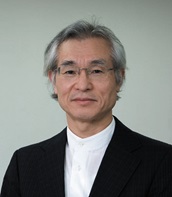Keynote 1
10/10/2018 9:52:00 AMWireless Evolution Towards 5G and Beyond
Fumiyuki Adachi
Research Organization of Electrical Communication, Tohoku University, Japan
Email: adachi@ecei.tohoku.ac.jp
Abstract
Mobile communications network has now evolved into the 4th generation (4G). An increasing popularity of broadband services demands a significant improvement in the spectrum efficiency and energy efficiency. Promising approach is to enhance the radio access network by using MIMO technology. After briefly overviewing the evolution of mobile communications network, we will overview the recent advances in distributed MIMO RAN. A number of distributed antennas are deployed over a traditional macro-cell area covered by a macro-cell base station (MBS). They are connected to the MBS by the optical mobile fronthaul. Distributed MIMO RAN exploits the spatial distribution of both antennas and users. Some of distributed antennas near a user terminal are selected to perform distributed MIMO cooperative transmission. A new frequency band, e.g. the mm wave band, where abundant bandwidth remains unused, will be utilized. Therefore, there exists high Doppler shift, which cases the channel estimation problem. Furthermore, adjacent macro-cells are loosely connected, and hence, the inter-cell interference (ICI) problem will be produced. In this talk, we will present adaptive channel estimation and adaptive ICI coordination (ICIC). Finally, we will discuss about RAN evolution into beyond 5G.
Biography
 Fumiyuki Adachi received the B.S. and Dr. Eng. degrees in electrical engineering from Tohoku University, Sendai, Japan, in 1973 and 1984, respectively. In April 1973, he joined the Electrical Communications Laboratories of Nippon Telegraph & Telephone Corporation (now NTT) and conducted various researches on digital cellular mobile communications. From July 1992 to December 1999, he was with NTT Mobile Communications Network, Inc. (now NTT DoCoMo, Inc.), where he led a research group on Wideband CDMA for 3G systems. Since January 2000, he has been with Tohoku University, Sendai, Japan. His research interests are in the area of wireless signal processing (multi-access, equalization, antenna diversity, adaptive transmission, channel coding, etc.) and networking.
Fumiyuki Adachi received the B.S. and Dr. Eng. degrees in electrical engineering from Tohoku University, Sendai, Japan, in 1973 and 1984, respectively. In April 1973, he joined the Electrical Communications Laboratories of Nippon Telegraph & Telephone Corporation (now NTT) and conducted various researches on digital cellular mobile communications. From July 1992 to December 1999, he was with NTT Mobile Communications Network, Inc. (now NTT DoCoMo, Inc.), where he led a research group on Wideband CDMA for 3G systems. Since January 2000, he has been with Tohoku University, Sendai, Japan. His research interests are in the area of wireless signal processing (multi-access, equalization, antenna diversity, adaptive transmission, channel coding, etc.) and networking.
He is an IEEE Life Fellow and an IEICE Fellow. He was a recipient of the IEEE Vehicular Technology Society Avant Garde Award 2000, IEICE Achievement Award 2002, Thomson Scientific Research Front Award 2004, Ericsson Telecommunications Award 2008, Prime Minister Invention Award 2010, KDDI Foundation Excellent Research Award 2012, C&C Prize 2014, IEEE VTS Stuart Meyer Memorial Award 2017, and IEEE ComSoc RCC Technical Recognition Award 2017. He is listed in Highly Cited Researchers 2001 (https://clarivate.com/hcr/researchers-list/archived-lists/).